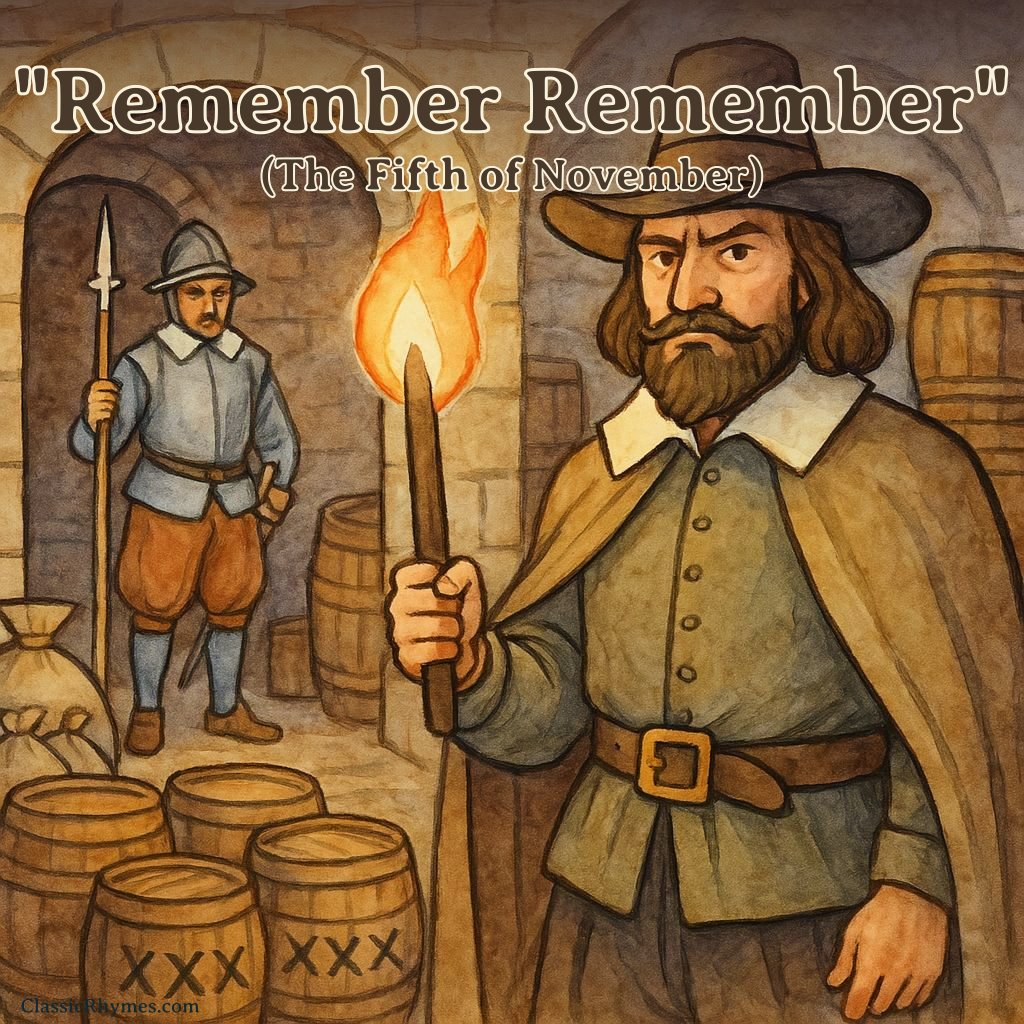Remember Remember (The 5th of November)
This rhyme, often associated with the Gunpowder Plot, recalls the failed attempt by Guy Fawkes and his co-conspirators to blow up the British Parliament in 1605. It is commonly recited with a focus on the date—November 5th—and is often accompanied by nursery rhymes and songs. This article explores the meaning, origins, and cultural significance of the rhyme, along with audio and downloadable resources for easy access and learning.
Remember, remember, the fifth of November,
The Gunpowder, Treason and Plot.
I know of no reason why the Gunpowder Treason,
Should ever be forgot.
Print or Save This Rhyme
Download PDFRecitals
Listen as female British:
Listen as male American:
What is the Meaning of the ‘Remember Remember (The 5th of November)’ rhyme?
“Remember, Remember” is a British folk verse recited each year on November 5th—Guy Fawkes Night or Bonfire Night—to commemorate the failed Gunpowder Plot of 1605, in which Guy Fawkes and his fellow conspirators attempted to blow up the Houses of Parliament. The rhyme acts as a cautionary reminder against treason and celebrates the thwarting of the plot.
History and Origin of the Rhyme
The rhyme was first documented in the 17th century, soon after the Gunpowder Plot, though variations of it have appeared over the centuries. It evolved from folk memory and public celebrations that marked the event with bonfires, fireworks, and effigies (“guys”) of Fawkes.
Time Period
Originating around 1605–1606, the rhyme was subsequently popularized in songbooks, ballads, and public celebrations throughout the UK, and has remained a part of British tradition for over four centuries.
Historical or Cultural Notes
The rhyme is chanted at Bonfire Night events across the UK, often as effigies of Guy Fawkes are burnt atop large bonfires and fireworks fill the sky. The tradition continues to this day, often accompanied by discussion of the history and legacy of civil dissent.
Why It Became Popular
Its memorable, rhythmic lines, historical focus, and association with an annual national event helped fix it in the collective memory. The spectacle of Bonfire Night, with communal bonfires and fireworks, ensures its continued presence in British culture.
Notable Variants
Shorter versions exist (“Please to remember the Fifth of November…”), and many add lines urging punishment for conspirators or commentary on justice.
Structure, Style, and Themes
Structure and Style
- Meter: Rhythmic iambs and trochees, suited for chanting or recitation
- Rhyme Scheme: Irregular but driven by repetition and rhyme for emphasis
- Line Count: Varies by version; typically 5 to 16 lines in popular forms
- Style Notes: Narrative, historical, cautionary
Themes
- Treason and justice
- National memory
- Cautionary tales
- Public celebration
Language Notes
The rhyme uses accessible language and striking imagery (“dark lantern and burning match,” “three-score barrels of powder”) to relay the shocking nature of the plot and its capture. Older English forms like “catch’d” and “Parli’ment” reflect historical usage.
Moral or Lesson
The verse promotes vigilance against treason and frames the historical event as a lesson of national unity and security, warning not to forget the dangers of subversion.

